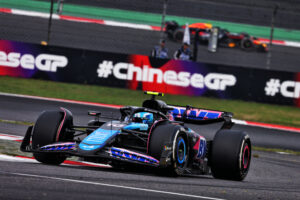‘Manor F1 folds’ is a term nobody was hoping to see with just a few weeks before the first pre-season test, however the popular team was simply unable to find a suitable buyer in time. This leaves just ten teams remaining in Formula 1 for the 2017 season, and this also means that the three teams which entered for the 2010 season: Lotus Racing, Virgin Racing and Hispania are no longer around. US F1 were also given entry into F1 for that season, but they dissolved before even turning a wheel. If there is a lesson to be taken from this, it is that the new holders Liberty Media has a heck of a lot of work to do.
The Manor team had arguably its most competitive season in its seven-year history in 2016, regularly fighting against other teams and getting into the second part of qualifying with Pascal Wehrlein on a fair few occasions on pace alone. They even snatched a point at the Austrian Grand Prix. However, they were beaten to tenth in the World Constructors’ Championship by rivals Sauber, this being arguably the final financial blow to the Banbury-based team. Statistically, their 2014 season was better, but the late Jules Bianchi’s magic performance at Monaco was the primary reason for those two precious points and ninth in that year’s championship.
The young teams which were chosen to join the F1 ranks for the 2010 season did so on the basis that there would be a budget cap in place. High costs and little reward (along with a rather substantial global financial crisis) had driven many teams out of F1 within a matter of months, so in that respect a cost cap made sense. However, many of the big teams rebelled and Max Mosley’s simple budget cap simply was trashed. Forced to comply with spending levels they were not anticipating was always going to make survival unbelievably tough for these new teams.
As mentioned, US F1 were gone well before they even attempted to make it to the season opener. Zoran Stefanovic attempted to take that 13th spot on the grid with his Stefan GP, but they were barred from entering the series. We had 24 cars take part in the 2010 Bahrain Grand Prix, but it was very clear that these teams had an incredible amount of work to do to even consider challenging for anything other than 17th fastest.
We had three seasons with the teams which became Caterham, Marussia and HRT over time, and bar Caterham occasionally challenging an underperforming Lotus from time to time, these teams remained firmly at the back and often looked in danger of folding at any point. We then lost HRT at the end of the 2012 season. Marussia would crucially take 10th in the championship in 2013 (the first time Lotus/Caterham finished lower than 10th), which put Caterham under pressure to take on drivers with more funding.
The new-for-2014 era of F1 saw the two remaining younger teams a little bit closer to the rest of the pack, with Bianchi able to drag his Marussia beyond one or both Saubers at times. He would also have standout drives in the rain. Just one week after Bianchi’s horrific accident, we saw Caterham and Marussia on the grid for what could have been just one last time. Both teams entered administration following the Russian Grand Prix, and F1 was down to just 18 runners. Caterham would make a one-off appearance at the season finale in a failed attempt to find a buyer, whilst Marussia’s decent 2014 helped them find investors for 2015 under the guise Manor Marussia.
The Manor Marussia team ran effectively a year-old car for the entirety of 2015, but with no other competition were able to finish 10th in the championship which was crucial. With a Mercedes junior, a Mercedes engine and plenty of time to prepare, things looked up for 2016 and the rebranded MRT team delivered. Unfortunately, Sauber’s two points at the soaked Brazilian Grand Prix saw MRT finish out of the top 10 in the championship, and that was that.
So F1 is down to just 10 teams once again, when there is almost certainly enough prize money in the pot for 13 teams to survive in F1 without too much worry. This is one area that Liberty Media must look at and quickly. Whilst getting immediate change for a fairer distribution may be impossible with any key figure having the authority to veto such a drastic financial change (which would hurt Ferrari more than anybody), this should be the first thing they should seriously think about when the 2020 Concorde Agreement is drafted up.
Liberty has also flirted with the idea of a cost cap, but it remains impossible to tell just how such a measure can be implemented or policed. If forced upon the teams as we saw all those years ago, new teams would likely end up with a situation very similar to the one we had back then. A budget cap seems to be the easy way out to this issue, yet whilst upsetting many of the key players at the same time.
Coming into F1 is not impossible in the 2010s though. The Haas team went about things a very different way to the teams who entered for 2010, by defecting their entry for a year and by cosying up to Ferrari (and having access to many of their parts) and Dallara, they were able to finish a stellar eighth in the championship in 2016, with a highest finish of fifth. What they achieved in two races is far more than any other brand new team since the beginning of this decade. But they also knew exactly what sort of environment they were getting themselves into.
The immediate result of this will be one which will be disappointing for those who are fans of underdogs such as Manor. They had all the ingredients to produce another solid car for 2017, but they simply ran out of money. Whether a potential new team would purchase the remaining assets and give rejuvenation into the factory and look for a 2018 entry or not is yet to be seen. But with F1’s financial structure in the state it is in currently, who would want to do that?






